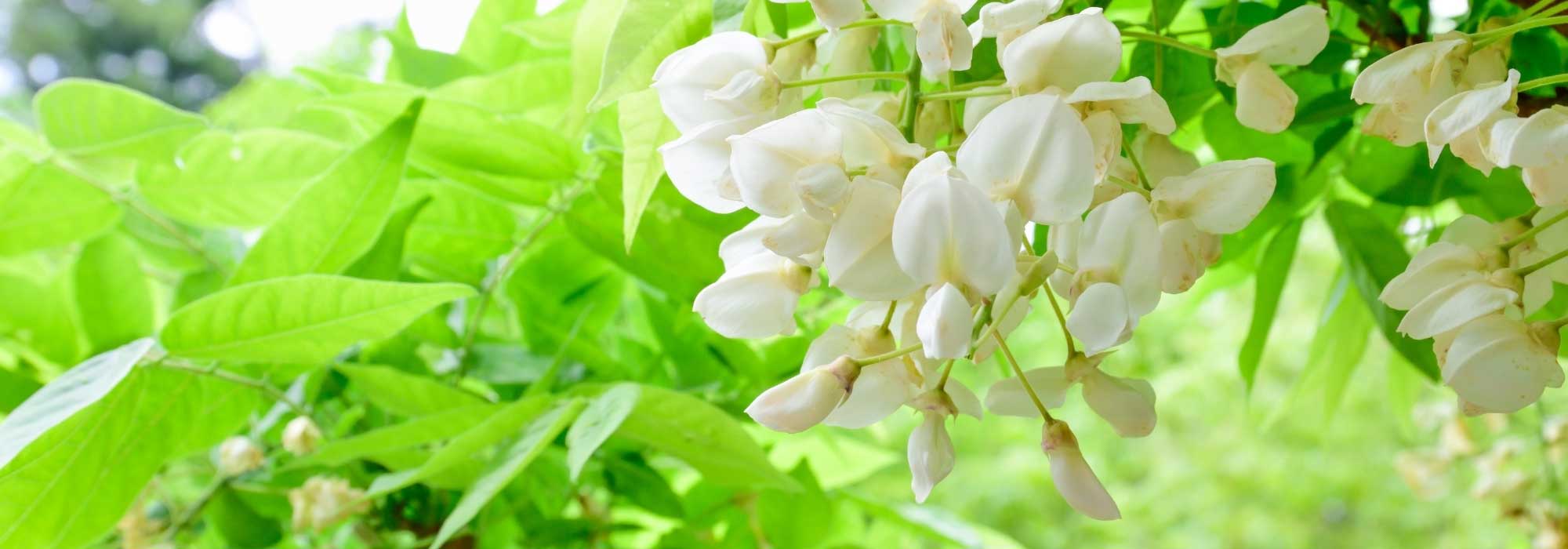
Growing wisteria in a pot
Choosing, planting, and caring for a wisteria in a pot: everything you need to know
Contents
You love wisteria and its incomparable flowering, but you only have a balcony, terrace, or concrete courtyard? Are you renting and unable to plant it in the ground? Know that wisteria can be grown in a pot, and provided you give it the proper care, you can enjoy its rapid growth and stunningly fragrant flowering year after year! Follow the step-by-step method to choose, plant, and care for your potted wisteria.
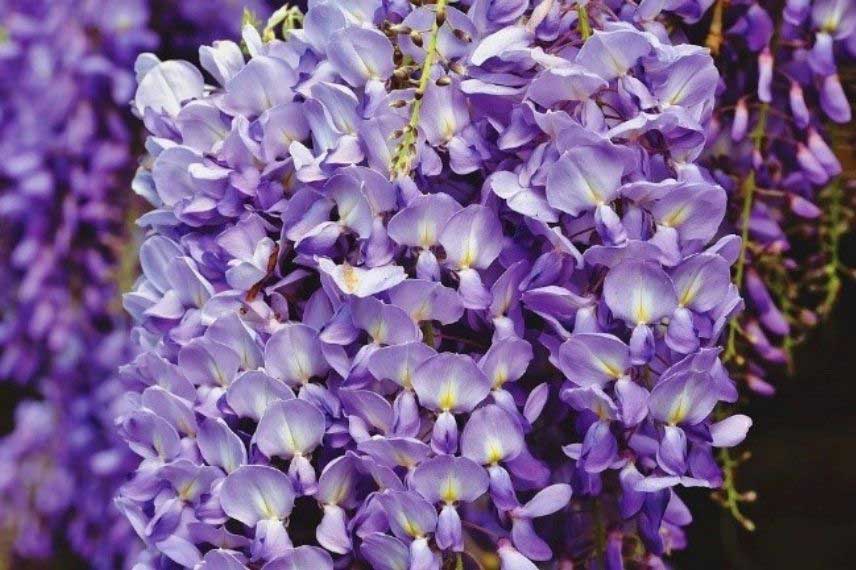
The magical flowering of wisteria
Choosing your wisteria
Any plant grown in a pot will have its root system constrained, resulting in a smaller size compared to one grown in open ground. This is somewhat akin to the principle of bonsai. Wisterias are climbing plants with significant growth and abundant foliage, requiring a deep and extensive root system. If you want to grow a wisteria in a pot and see it flower, you should therefore choose a species of smaller stature, which will be more suitable. Both Wisteria chinensis and floribunda can reach up to ten metres and develop strong trunks. Thus, you should prefer a smaller wisteria, such as Wisteria Venusta, which will have its growth reduced by half compared to the former when planted in open ground. It boasts a wonderful flowering in May-June and is perfectly hardy. It also has the advantage of not forming trunks that irreparably encircle the support. You will have a choice between different varieties:
- Wisteria venusta, with pure white flowers
- Wisteria venusta ‘Okayama’, very floriferous, with short purple clusters
- Wisteria venusta ‘Rosea’, with lianas bearing clusters of fragrant flowers in a lovely soft pink
And the hybrids:
- Wisteria (x) venusta ‘Grande Diva Nathalie’, with incredible bicoloured violet-purple and white flowers
- Wisteria (x) venusta ‘Grande Diva Barbara’, with cascades of beautiful deep mauve flowers
- Wisteria (x) venusta ‘Grande Diva Cecilia’, with lovely double blue-purple and white flowers
- Wisteria (x) venusta ‘Grande Diva Maria’, with a sweetly fragrant bicoloured lavender and white flowering

Wisteria venusta, Wisteria venusta ‘Okayama’, Wisteria (x) venusta ‘Grande Diva Nathalie’, Wisteria venusta ‘Rosea’ and Wisteria (x) venusta ‘Grande Diva Cecilia’
Read also
Wisteria: how to train and prune it?Choosing the pot
To ensure your wisteria can develop properly, you need to choose the largest possible pot. It should be wide enough, deep enough, and of course, have a drainage hole at the bottom. Opt for the biggest pot or container you can find, at least 50 to 60 cm in diameter and depth, or even more. Wisterias have a wide and deep root system, so the container must be suitable. Planting in a pot limits their growth and spread, but give them every chance to develop properly.
Preferably, choose a terracotta pot, a more attractive material (though that’s a matter of taste!) and, above all, more environmentally friendly than plastic. You should select pottery that is frost-resistant and thicker than average.
Depending on your preferred style, you might also consider a large wooden planter or pot (purchased or DIY for the handy ones!) or even resin, which has the advantage of being a much lighter material, especially if the wisteria is intended to be placed on your third-floor balcony without a lift… particularly since you’ll also need to carry up the bags of potting soil to fill it all. When planting a climbing plant, it may be wise to choose a planter with an integrated trellis on which you can train the shoots as they grow. Otherwise, you’ll need to provide a support: position the pot against a wall where a trellis for climbers or a mesh can be fixed, at the foot of a pergola or gazebo. Wisteria can also be trained on a stem.

Terracotta pots, wooden planters, and planters with trellises can accommodate wisterias
Discover other Wisterias
View all →Available in 0 sizes
Available in 0 sizes
Available in 0 sizes
Available in 0 sizes
Available in 2 sizes
Available in 1 sizes
Available in 0 sizes
Available in 1 sizes
Available in 3 sizes
Available in 1 sizes
Choosing the substrate and planting
In open ground, wisteria is described as thriving in rather rich and deep soil but can actually grow in more challenging conditions, even quite poor, dry, and well-drained soils. First, ensure good drainage at the bottom of the pot, with a layer of gravel or clay balls at least 3 cm thick. Ideally, mix good garden soil or topsoil, potting compost, and organic matter such as compost or manure.
Container planting can be done almost all year round except during the hottest months, as it will require abundant watering. The best times to plant are in spring or autumn. If, once the pot is removed, the roots are too compacted or form a root ball, they should be gently untangled. Plant, leaving a few centimetres below the edge of the pot, firm down by hand, and water. It is ideal to apply a layer of organic (wood chips) or mineral (gravel, pebbles) mulch on the soil surface to retain moisture and reduce the frequency of watering.
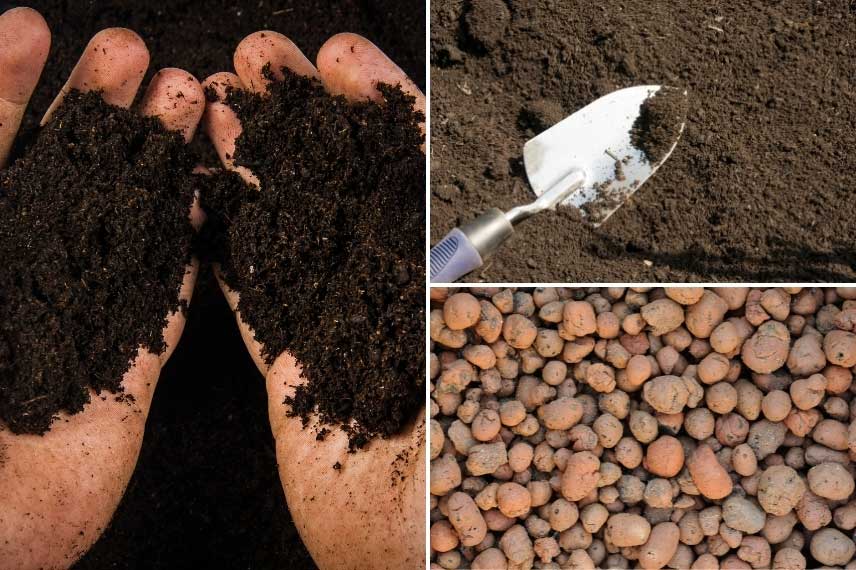 Planting should be done correctly, with good substrate and clay balls for drainage
Planting should be done correctly, with good substrate and clay balls for drainage
Read also
Choosing your wisteria: buyer's guideWatering and care
Your wisteria is now installed on your terrace in its lovely pot, in full sun or partial shade. It will need watering on average twice a week, adjusting the amount of water to the size of the container. It is possible to automate pot watering. There are watering kits available with drip systems or micro-sprayers for this purpose. However, you will need a permanent water source to supply the system, which will be triggered precisely by a battery-operated timer. Setting up the whole system is easy and discreet, with the pipes able to be hidden at the back of the containers. This is a simple way to keep your wisteria alive during your absences! If the wisteria produces plenty of leaves but no flowers, avoid any additional organic matter (compost) and add a fertiliser rich in potash and phosphate to encourage flowering.
Carry out several annual prunings to limit the proliferation of shoots in all directions and to promote the formation of flower buds. Count on between 3 and 5 interventions throughout the year, as potted wisteria needs to be contained to maintain a balance between the root system and the foliage. In winter, prune by reducing the terminal shoots by half their length and retaining only 2 buds on each lateral shoot. If you want to train your wisteria on a trunk, you will need to prune the lower lateral shoots gradually to clear the trunk and allow it to thicken.
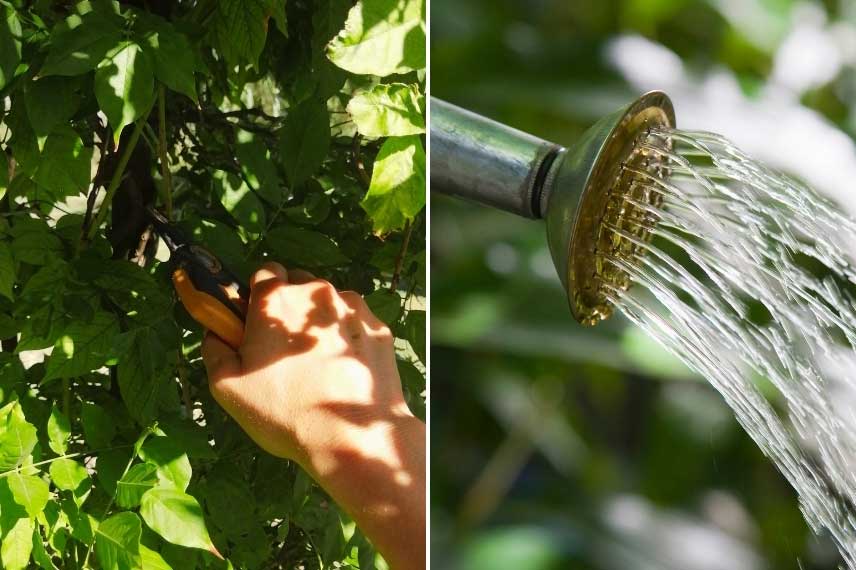
Regular pruning and watering will be necessary for potted wisteria
For further reading
- Browse our article how to pair wisteria?
- Subscribe!
- Contents
































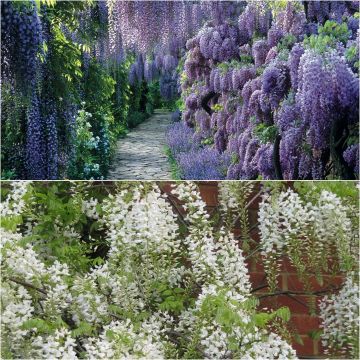
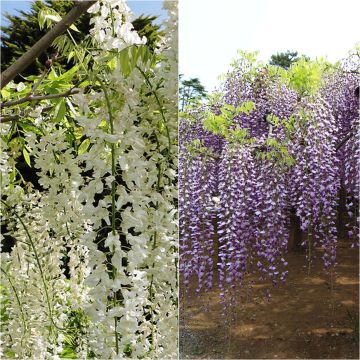



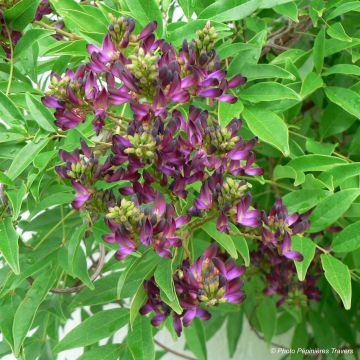
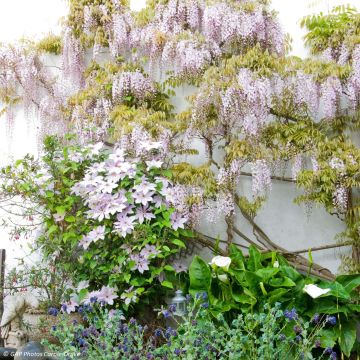
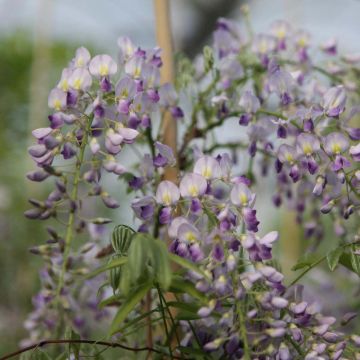
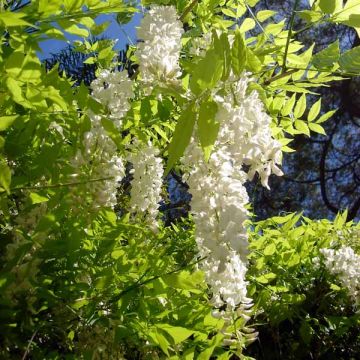
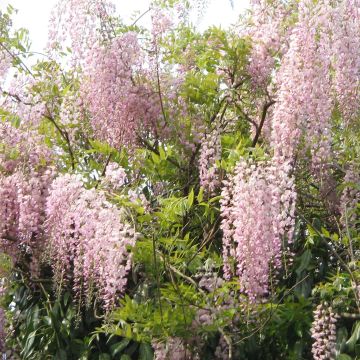
Comments